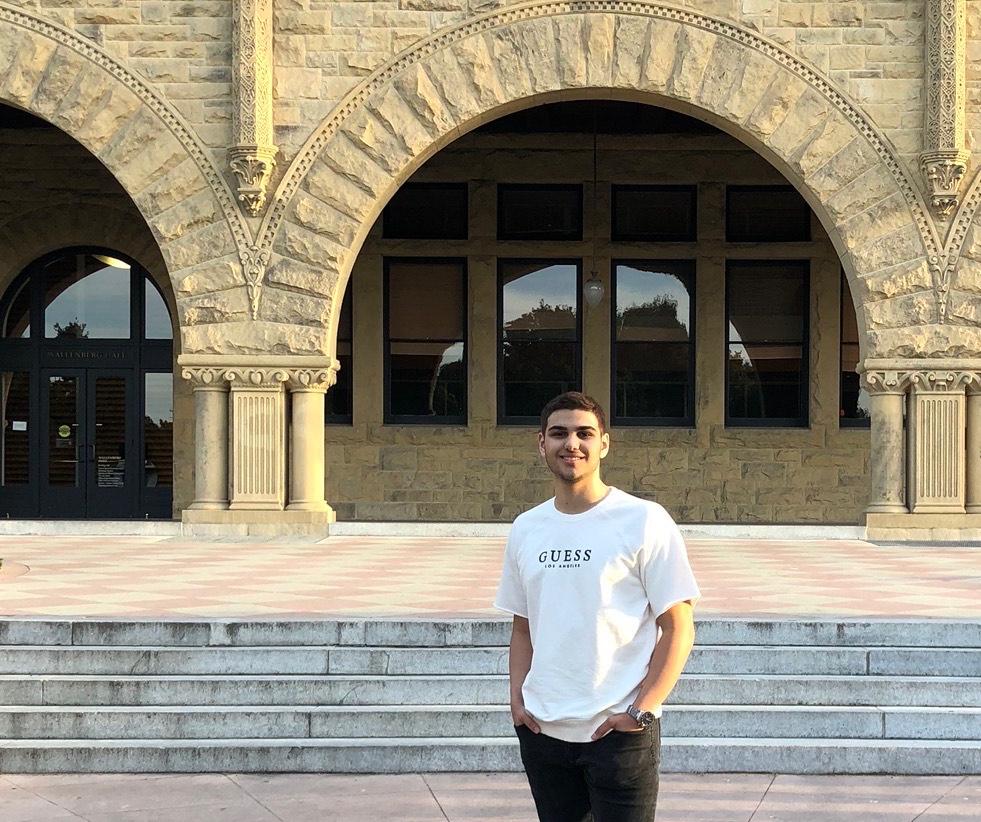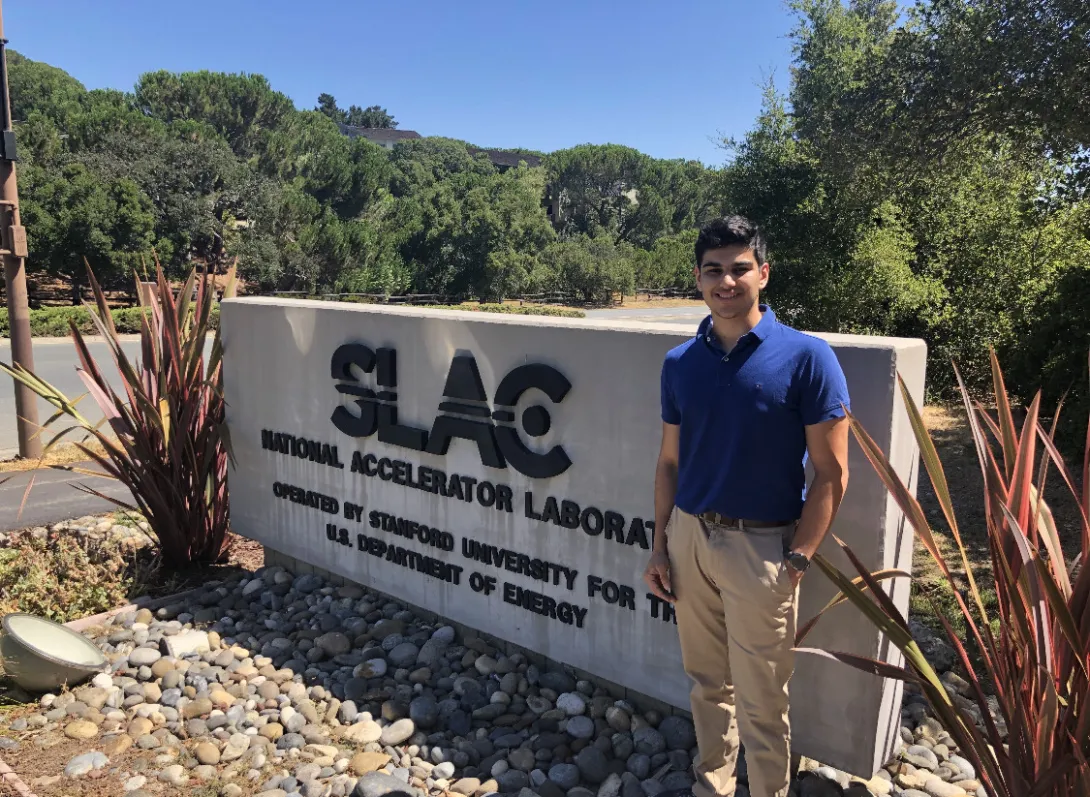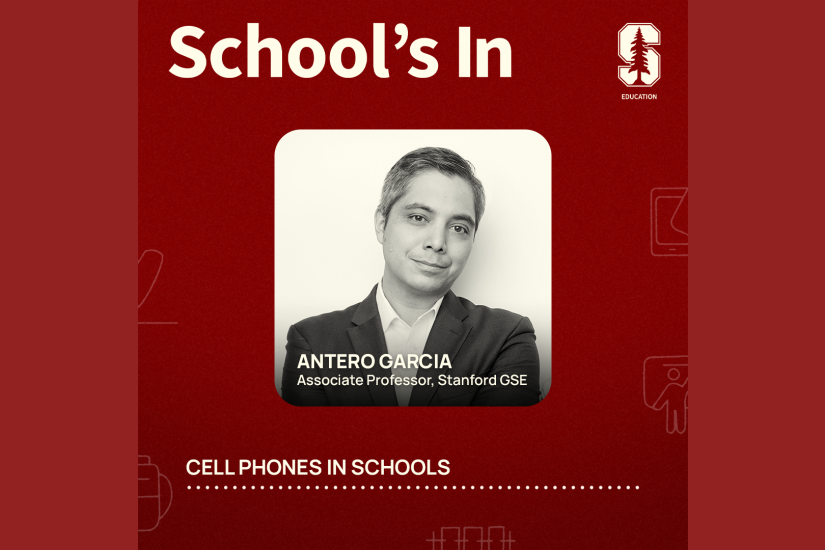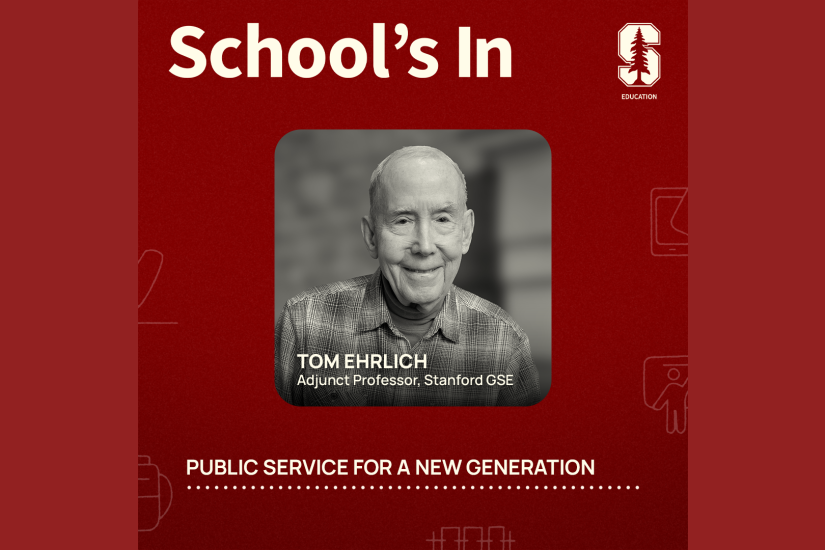
For one Stanford junior, a community college initiative helped forge a path to the Farm
Shadi Elaridi has always had a knack for engineering: As a child, he ruminated over questions of the universe, wondering about the forces that brought atoms together but kept planets apart. He started entering robotics competitions in the eighth grade, and taught robotics classes for kids while he was still a teenager himself.
But when he began applying to colleges, his application was repeatedly denied. He had attended three years of high school overseas—and despite his stellar record and advanced coursework, his transcript didn’t match the admission requirements for four-year colleges in the United States.
He enrolled at Ohlone College, a public community college in his hometown of Fremont, Calif., where a counselor told him about STEM Core, a national initiative led in part by Stanford Graduate School of Education (GSE) faculty. The initiative, funded by the National Science Foundation INCLUDES program to build a more diverse pipeline for STEM fields, offers community college students an accelerated mathematics curriculum and internship opportunities with major science and engineering employers.
Elaridi signed up—and two years later, he’s joined the Class of 2022 as a mechanical engineering major at Stanford, where only 1 to 2 percent of transfer applicants are typically admitted each year, about half of whom are community college students.
An unconventional path
Elaridi was born in Fremont, but the Great Recession of 2007-2009 hit home when he was in fourth grade. His father secured work overseas at the U.S. Air Force Base in Qatar, and the family packed up and moved to nearby Lebanon. Shortly before Elaridi’s senior year of high school, his father’s project came to an end and the family returned to the Bay Area.
As Elaridi began applying to four-year colleges in the United States, he discovered that the curriculum and grading system in Lebanon would be a problem.
“My transcript was three years of pass or fail because of the way courses are structured in Lebanon,” he said. The mathematics curriculum he’d completed in Lebanon was rigorous, but the sequence didn’t conform to four-year college admissions requirements. “I didn’t have specific coursework that could be considered equivalent to a calculus or precalculus course, even though I had covered a lot of the material.”
He applied to a number of universities, “but none would even consider my application because of these differences,” he said. “That’s something I didn’t realize, coming back to the States.”
He enrolled at Ohlone, which happens to be one of 25 community colleges nationwide participating in the STEM Core Alliance. At an academic counselor’s suggestion, Elaridi became one of 1,700 students who’ve taken part in the initiative since it launched in 2015.
Jo Boaler, a professor at the GSE and cofounder of youcubed, leads professional development for STEM Core Alliance faculty. This component of the STEM Core program is run by the Stanford Educational Leadership Initiative, a project at the GSE that designs programming to support professional development for community college leaders.

In the summer of 2019, Elaridi interned at the SLAC National Accelerator Laboratory, where he worked on what is projected to be the world’s brightest x-ray laser.
Hands-on work experience
In addition to providing an accelerated math curriculum, STEM Core connects students with paid work opportunities in the field. Last summer, after his first year in the program, Elaridi interned at the SLAC National Accelerator Laboratory, where he worked on what is projected to be the world’s brightest x-ray laser, LCLS-II.
“I hadn’t applied myself to an engineering professional workforce before, and this experience reassured me that it’s the kind of work that I want to do,” said Elaridi, who envisions pursuing a PhD in quantum engineering.
He also participated in an aerospace engineering internship at NASA’s Johnson Space Center in Houston, where he helped engineer a long-term air revitalization system and mock-up Mars rover.
On his own, Elaridi recently started a local organization called Engikidz, offering robotics classes to kids age 5 to 18 in the Bay Area. “I really wanted to help kids in other countries with much fewer resources, so with half of the proceeds that I earned from Engikidz, I decided to donate robotics kits to students somewhere else in the world,” he said. “I have friends in Lebanon who teach robotics through nonprofits as well, so I ended up sending kits back for students who wouldn’t have had access otherwise.”
He’ll never forget the moment he found out he was accepted to Stanford. “My brother is someone who’s just lucky in whatever he does, so when it was time to check to see if I got in or not, I asked him to click the button,” Elaridi remembered. “Suddenly there was confetti coming down the screen—it was amazing. I couldn’t believe it.”
Rose-Margaret Ekeng-Itua, who taught Elaridi’s introductory engineering course at Ohlone, recalled his strong work ethic and exceptional focus, adding that he’s already outdone her expectations. “He was always a great leader—a team player and a mentor to other engineering students,” she said. “I can’t wait to see what he does at Stanford.”
Faculty mentioned in this article: Jo Boaler



